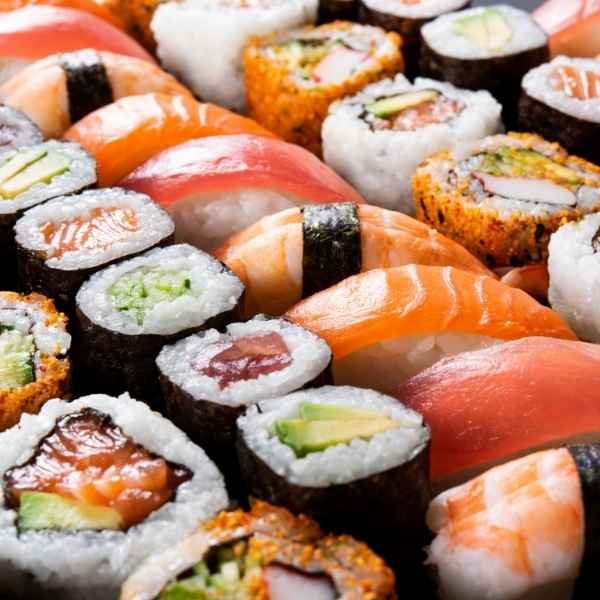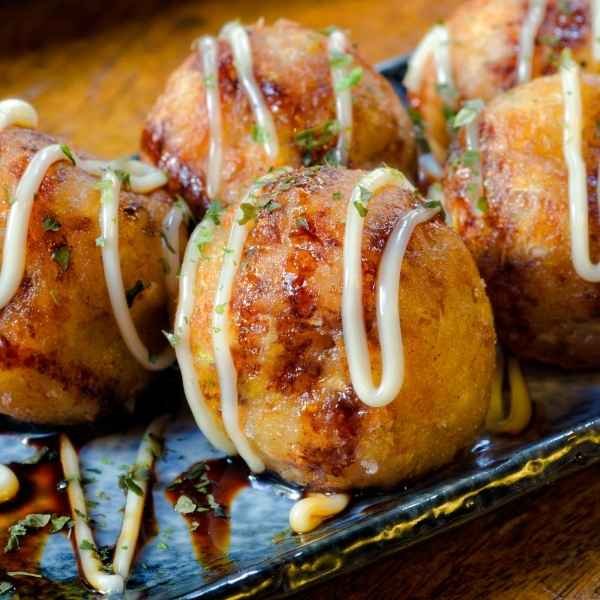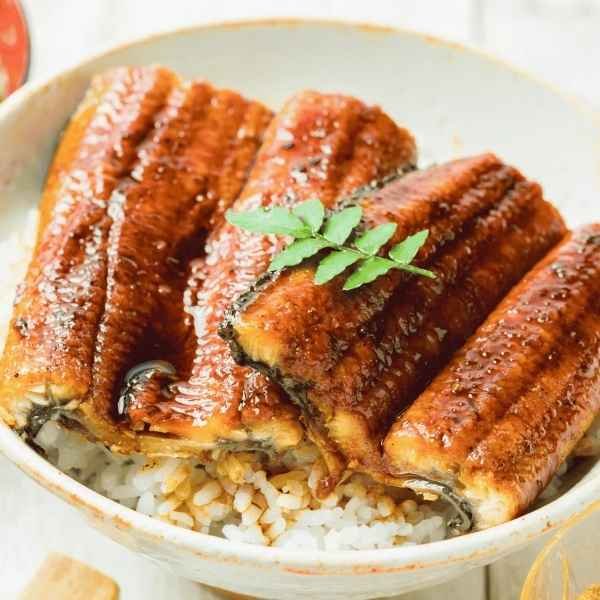
10 Japanese Dishes You Must Try – A Culinary Journey
Japan’s culinary scene is a delightful blend of tradition, precision, and fresh ingredients. Whether you’re a foodie exploring Japanese cuisine for the first time or a seasoned traveler reminiscing about your favorite dishes, here are ten must-try delights that capture the essence of Japan.
10 Japanese Dishes You Must Try
Japan’s culinary landscape is a rich tapestry of flavors, textures, and traditions. From the delicate artistry of sushi to the hearty comfort of ramen, each dish reflects Japan’s deep respect for ingredients and seasonal freshness. Crispy tempura, savory okonomiyaki, and street-food favorites like takoyaki showcase the diversity of flavors, while soba and udon highlight the simplicity and elegance of Japanese noodles.
1. Sushi (寿司)
A global favorite, sushi is a delicate combination of vinegared rice, fresh seafood, and vegetables. From nigiri (hand-pressed sushi with a topping of fish) to maki rolls (seaweed-wrapped rice and fillings), sushi showcases Japan's coastal abundance. The balance of flavors and textures makes each bite a unique experience. Whether enjoyed at a high-end sushi restaurant or a conveyor-belt sushi shop, the freshness and precision of sushi-making remain unparalleled.

2. Tempura (天ぷら)
Tempura is a dish of lightly battered and deep-fried seafood or vegetables, known for its crisp, golden texture. Originating from Portuguese influences in the 16th century, Japanese tempura has evolved into a refined delicacy. Typically served with a dipping sauce called tentsuyu (a blend of dashi, soy sauce, and mirin), tempura offers a delightful contrast of crunch and umami. Common varieties include shrimp, sweet potato, and eggplant tempura.
Discover how reading Japanese manga can enhance your language skills while exploring Japan’s culinary scene. Read Japanese Manga for Language Learning
3. Ramen (ラーメン)
Ramen is a soul-warming noodle soup enjoyed throughout Japan, with regional variations offering distinct flavors. Tokyo-style ramen features a soy sauce-based broth, while Hokkaido’s miso ramen is rich and hearty. Fukuoka’s tonkotsu ramen, made with a creamy pork bone broth, is another popular variety. Each bowl typically includes chashu (braised pork), menma (fermented bamboo shoots), green onions, and a soft-boiled egg, making ramen a deeply satisfying meal.
4. Okonomiyaki (お好み焼き)
Okonomiyaki, often referred to as a Japanese savory pancake, is a dish where ingredients such as cabbage, pork, seafood, and cheese are mixed into a batter and grilled on a hot plate. The name means "grilled as you like it," reflecting the variety of ingredients that can be used. The pancake is typically topped with a special okonomiyaki sauce, mayonnaise, bonito flakes, and dried seaweed. Popular in Osaka and Hiroshima, okonomiyaki is a fun, interactive dish that can be enjoyed in specialty restaurants where diners cook it themselves.
5. Takoyaki (たこ焼き)
Takoyaki are bite-sized, ball-shaped snacks made from a wheat-based batter filled with diced octopus, tempura scraps, green onions, and pickled ginger. Cooked in special molded pans, they are turned frequently to achieve a crispy exterior while remaining soft inside. Takoyaki is usually topped with a savory sauce, mayonnaise, and bonito flakes that appear to "dance" due to the heat. Originating from Osaka, these delicious street food treats are a must-try for any visitor.

6. Soba (そば) and Udon (うどん)
Soba and udon are two traditional Japanese noodle dishes with distinct characteristics. Soba, made from buckwheat flour, has a slightly nutty flavor and is often served either cold with a dipping sauce (zarusoba) or hot in a flavorful broth. Udon, made from wheat flour, is thicker and has a chewy texture. Popular udon varieties include kitsune udon (topped with sweet fried tofu) and curry udon (served in a rich curry-based broth). Both noodles are enjoyed year-round and offer a taste of Japan’s culinary simplicity and elegance.
Talking about food is a great way to practice speaking Japanese. Improve your fluency with tips from our Practice Speaking Japanese Online guide.
7. Tonkatsu (とんかつ)
Tonkatsu is a breaded and deep-fried pork cutlet, typically served with shredded cabbage and a tangy, slightly sweet tonkatsu sauce. It is believed to have been inspired by European-style cutlets but has been adapted into a uniquely Japanese dish. Tonkatsu is often accompanied by miso soup and rice, making it a well-rounded and satisfying meal. Variations include katsu curry (tonkatsu served with Japanese curry) and katsudon (tonkatsu served over rice with egg and sauce).
8. Yakitori (焼き鶏)
Yakitori consists of skewered and grilled chicken pieces, seasoned either with salt (shio) or a savory-sweet soy-based sauce (tare). Different parts of the chicken, including thigh, breast, liver, and even cartilage, are used to create a variety of flavors and textures. Yakitori is commonly enjoyed in izakayas (Japanese pubs) as a snack with beer or sake. Its smoky, juicy flavors make it an irresistible dish for both locals and visitors.
9. Unagi (うなぎ)
Unagi, or freshwater eel, is a prized delicacy in Japan. The eel is typically grilled over charcoal and glazed with a sweet-savory tare sauce before being served over rice (unadon). Unagi is considered an energy-boosting food, particularly popular during the summer months. Due to its rich flavor and tender texture, unagi is often featured in high-end Japanese cuisine. Specialty restaurants dedicated to unagi preparation can be found throughout Japan.
If you’re planning to work in Japan, knowing culinary terms can impress employers. Learn key expressions with our Japanese Resume Format & Key Phrases resource.

10. Miso Soup (味噌汁)
Miso soup is a cornerstone of Japanese meals, made from a base of dashi broth and miso paste (fermented soybean paste). Depending on the region and household, it may include tofu, seaweed, green onions, mushrooms, or clams. The soup is known for its deep umami taste and nutritional benefits, as miso is rich in probiotics. It is commonly served as a side dish with rice and pickles, making it a comforting and essential part of Japanese cuisine.
Ensure you pronounce Japanese dish names correctly by following our Japanese Pronunciation Guide.
Japan’s culinary world is vast and deeply rooted in history. Whether you’re dining in a Michelin-starred restaurant or grabbing street food in Osaka, each dish tells a story of craftsmanship and culture. Which of these have you tried? Let us know your favorites!
Enhance your email or letter writing skills with cultural context using our Write Emails and Letters in Japanese guide.
Frequently Asked Questions (FAQ)
1. What is the most popular Japanese dish worldwide?
Sushi is the most famous Japanese dish globally. Loved for its fresh ingredients and delicate flavor balance, it’s enjoyed in restaurants, homes, and sushi bars worldwide.
2.Is Japanese food always raw?
No, Japanese cuisine includes both raw and cooked dishes. While sushi and sashimi feature raw fish, dishes like ramen, tempura, yakitori, and tonkatsu are fully cooked and flavorful.
3.What is the difference between soba and udon noodles?
Soba noodles are thin, made from buckwheat flour, and have a slightly nutty taste. Udon noodles are thicker, chewy, made from wheat flour, and usually served in a mild, comforting broth.
4.Is Japanese food spicy?
Traditional Japanese dishes focus on umami rather than spice. Some dishes, like spicy ramen or wasabi sushi, provide a mild heat, but most flavors are subtle and balanced.
5.What is the best way to experience authentic Japanese cuisine?
The best way is to visit Japan and enjoy its regional specialties. Alternatively, seek Japanese-owned restaurants, izakayas, or specialty sushi and ramen spots near you for an authentic taste.